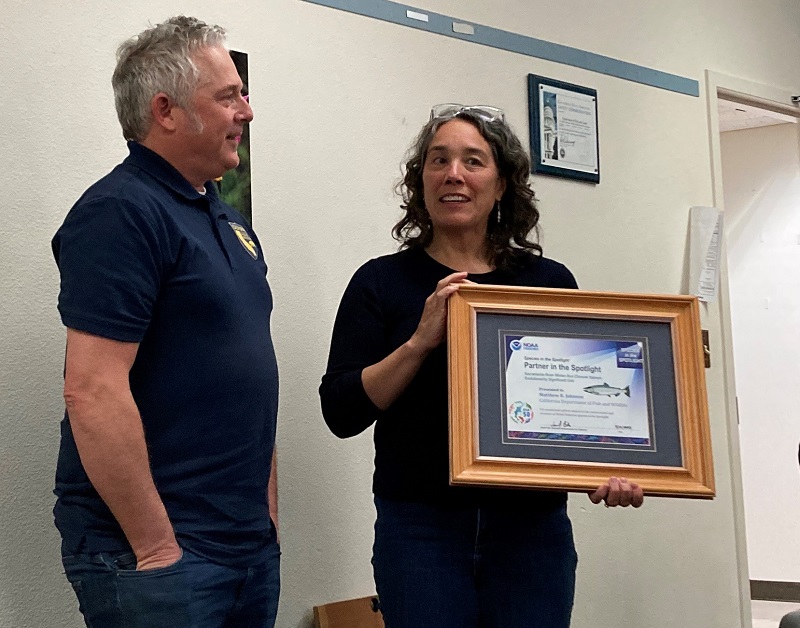

The National Oceanic and Atmospheric Administration (NOAA) has recognized a CDFW senior environmental scientist for his role in the historic effort to return endangered winter-run Chinook salmon to the McCloud River for the first time since construction of the Shasta Dam in the 1940s.
Matt Johnson, CDFW’s fisheries supervisor for the winter-run Chinook salmon reintroduction pilot project, was given NOAA’s Partner in the Spotlight Award on Jan. 25, 2024. Johnson oversaw many of the project’s critical components including remote site incubation, trapping of juvenile winter-run and coordinating with project partners including the Winnemem Wintu Tribe.
“It was a surprise and an honor. I threw myself 100 percent into the project so I’m appreciative of the recognition. The project turned into a fascinating and unique opportunity to do something new and historic. It was all unexpected,” Johnson said.
The project launched in summer 2022 in response to drought conditions affecting Shasta reservoir and the lower Sacramento River downstream of Shasta reservoir. Multiple years of severe drought drastically reduced cold-water storage that endangered Chinook needed to live and spawn. CDFW, NOAA, Winnemem Wintu Tribe and the U.S. Fish and Wildlife Service (USFWS) partnered to move winter-run eggs upstream to the McCloud. The river offered favorable habitat including summer cold water conditions required for spawning but was inaccessible to fish because of the dam.
Partners initially relocated about 20,000 fertilized winter-run Chinook salmon eggs from USFWS’ Livingston Stone National Fish Hatchery near Redding. The eggs were transported 80 plus miles to the banks of the McCloud where the species historically spawned prior to construction of the Shasta Dam. The eggs were then placed in specialized incubators. In early August, another 20,000 eggs were transferred to the incubators.
The eggs were released into the river as fry, which were then collected in rotary screw […]
Full article: wildlife.ca.gov
Clean water is essential for life, yet millions of Americans unknowingly consume contaminants through their…
Human brains contain higher concentrations of microplastics than other organs, according to a new study, and the…
From the Office of the Governor: In anticipation of a multi-day, significant atmospheric river in Northern California,…
From Governor Newsom: Scientists, water managers, state leaders, and experts throughout the state are calling…
Photo: A harmful algal bloom in Milford Lake, Kansas, made the water appear bright green.…
An expanded plastic foam coffee cup is at a donut shop in Monterey Park, California.…